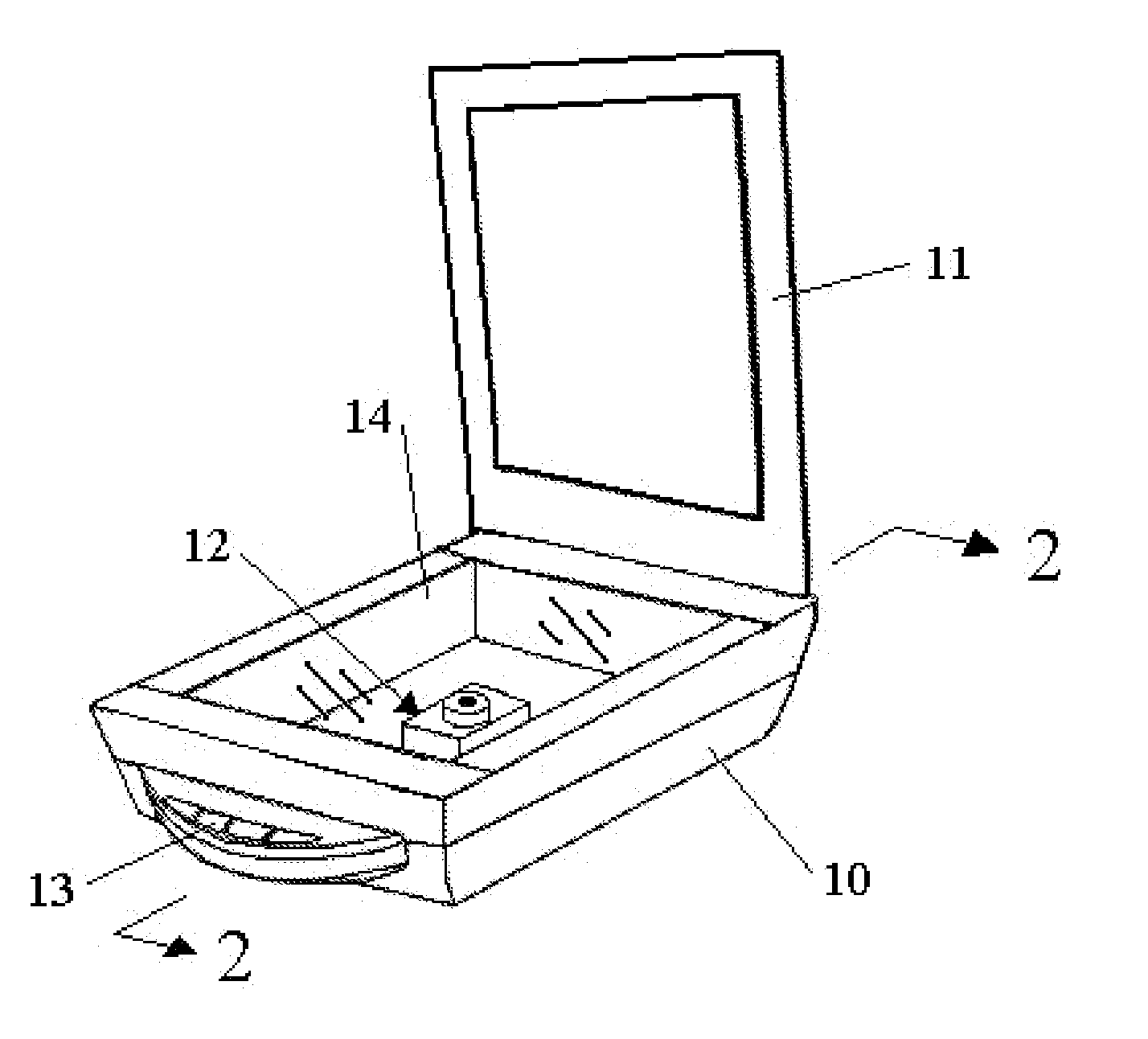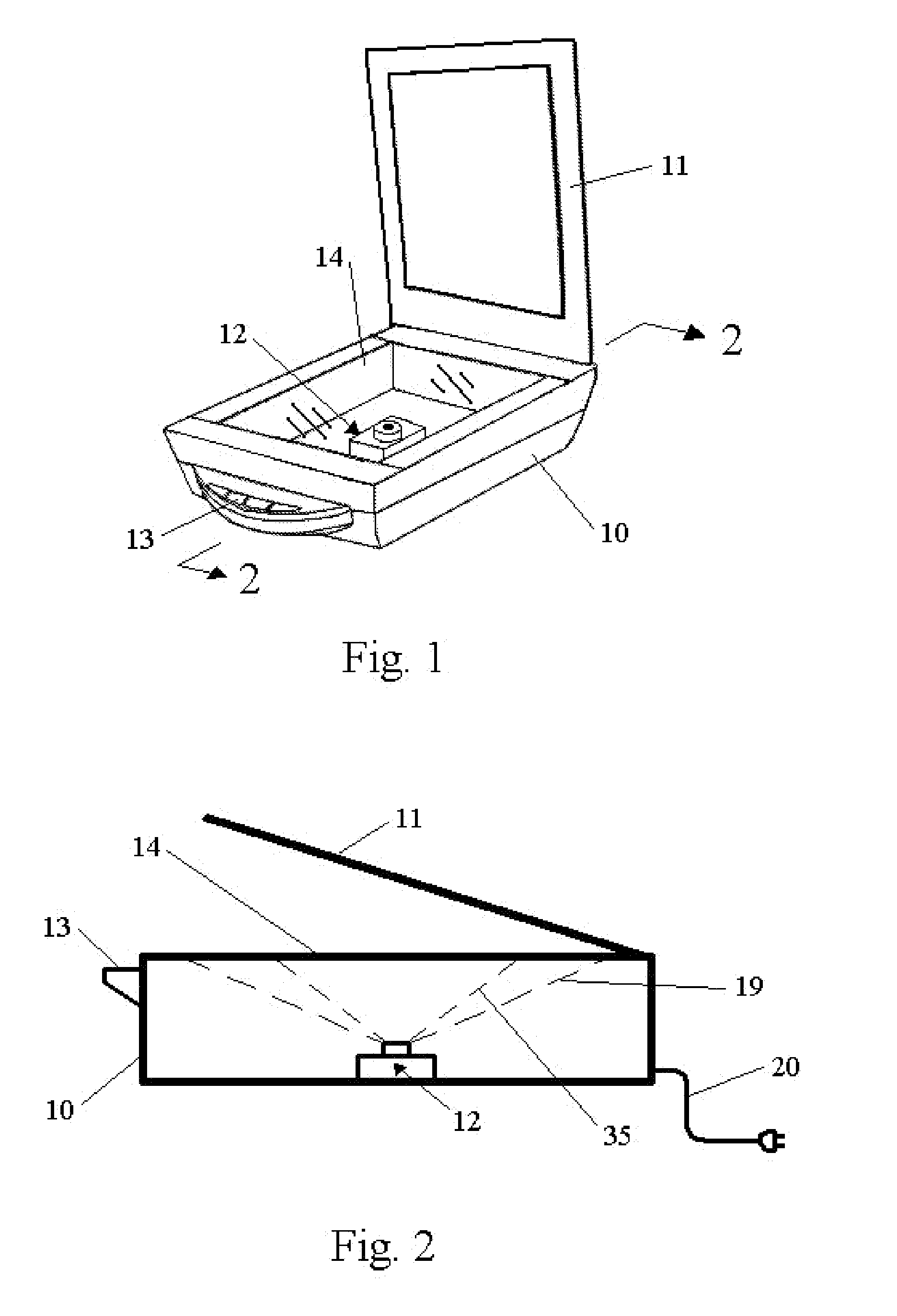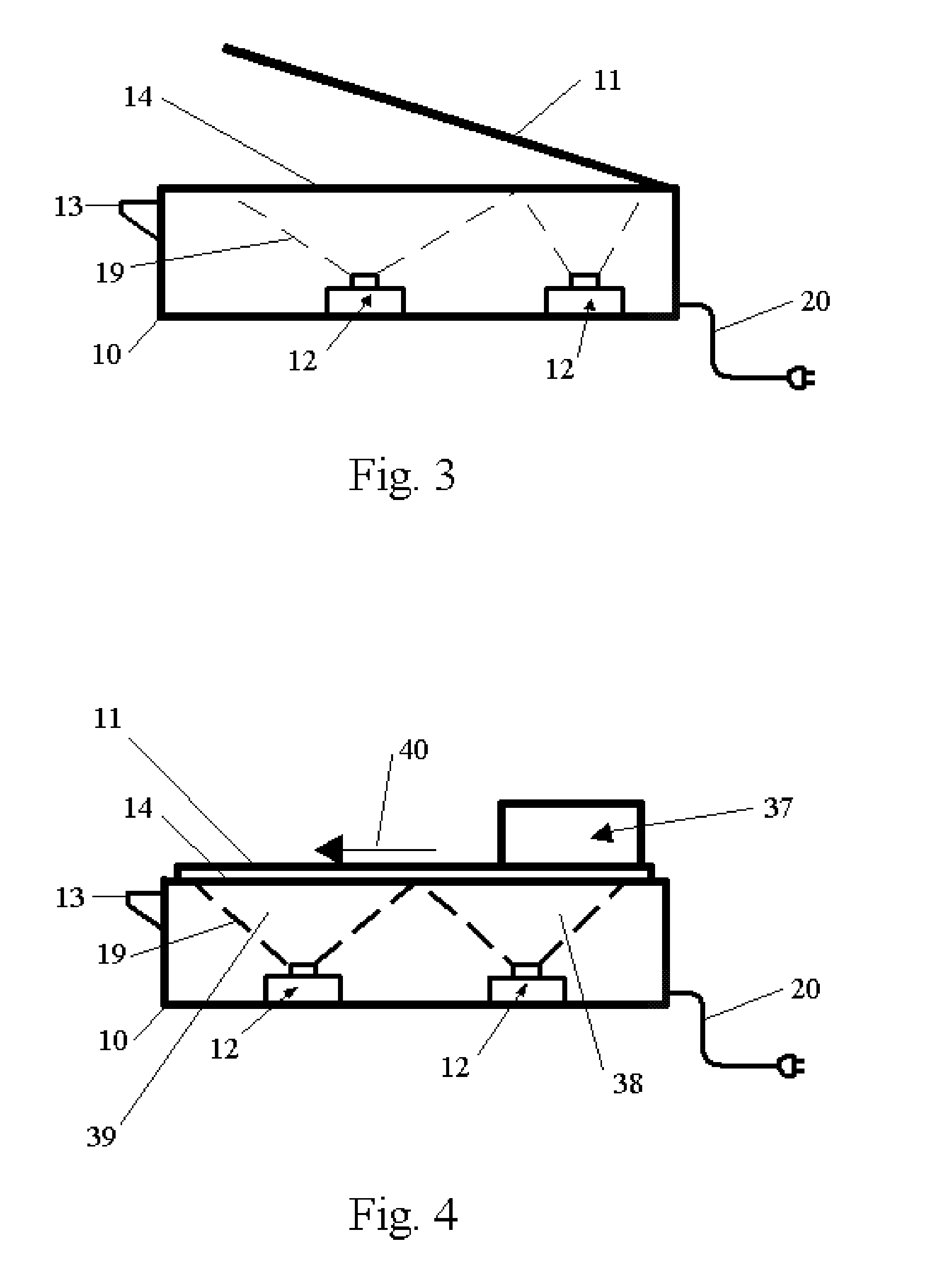Digital Sensor Whole Image Scanning Device
a scanning device and digital sensor technology, applied in the field of scanning devices, can solve the problems of limiting the scanning speed to the physical movement, adding to the expense and complication of the device, and the previous scanner versions fall into several problem areas, so as to achieve the effect of quickly and efficiently creating images of objects
- Summary
- Abstract
- Description
- Claims
- Application Information
AI Technical Summary
Benefits of technology
Problems solved by technology
Method used
Image
Examples
Embodiment Construction
[0076]FIG. 1 depicts the scanning device assembly with the exterior casing 10, integral internal digital camera sensor apparatus 12 inside, replacing the sensor bar, light bar, and all motorized elements. Also depicted is the translucent plate 14 for holding scanned objects in relative position to the digital sensor, external controls 13 for operating the unit, and the optional lid / cover 11 for the device.
[0077]FIG. 2 depicts a cutaway section of the assembly. This figure shows the casing 10 in section, the lid 11, a power source 20 (note this could be plug in or internal battery source), the digital photo / image apparatus 12, and the relation of the image focal area 19 to the translucent plane 14. This figure also depicts the changed focal area 35 on the translucent plane by changing the focus of the camera lens.
FIGS. 3 and 4 Additional Embodiments
[0078]FIG. 3 depicts a cross section of an additional embodiment scanner with similar elements to that depicted in FIG. 2, showing the...
PUM
 Login to view more
Login to view more Abstract
Description
Claims
Application Information
 Login to view more
Login to view more - R&D Engineer
- R&D Manager
- IP Professional
- Industry Leading Data Capabilities
- Powerful AI technology
- Patent DNA Extraction
Browse by: Latest US Patents, China's latest patents, Technical Efficacy Thesaurus, Application Domain, Technology Topic.
© 2024 PatSnap. All rights reserved.Legal|Privacy policy|Modern Slavery Act Transparency Statement|Sitemap



